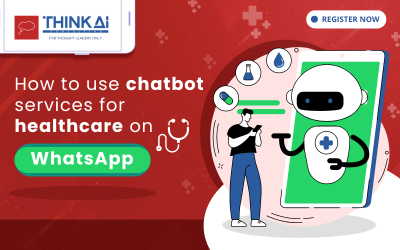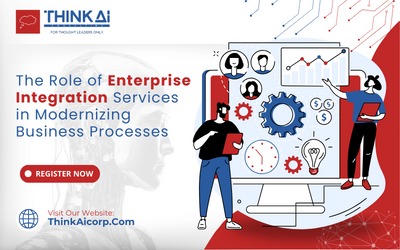As a manufacturing CIO, you’re sitting in a goldmine of data that could transform your business into a lean, mean-efficiency machine. But don’t think you can just plug in some AI and watch the magic happen. Harnessing the full potential of modern data tech requires strategy and knowledge. Luckily, you have found the inside scoop. We are going to break down step-by-step how to collect, slice, and dice all that data to unlock serious operational excellence.
Get ready for a crash course in leveraging info to boost productivity and profits. With the right data approach, you will have waste reduction and process optimization happening faster than you can say “data.” So, plug in and power up, because this intel will give you the tools to drive your organization into the future.
Now let’s get digitally lean, manufacturing friends!
The Promise of Data and AI for Driving Lean Initiatives
Optimizing processes through data analysis
As a CIO or manufacturer, you have access to a lot of data that can help identify waste and inefficiencies on the shop floor by:
- Analyzing data from sensors
- Examining equipment, and business systems
- Pinpoint bottlenecks and redundancies in manufacturing processes
- Spotting all opportunities for optimization
Leveraging data analysis for process optimization is the first step to developing leaner operations.
AI-powered waste reduction
Once you know where the waste is, you need to determine how to reduce it. AI and machine learning algorithms can help identify patterns in your operations data to detect the root causes of inefficiencies. They can also simulate the impact of process changes so you can determine the optimal solutions for waste reduction before implementing them.
Achieving continuous improvement
Driving lean initiatives is not a one-and-done effort. To achieve operational excellence, you need to pursue continuous improvement. With AI and data analysis capabilities in place, you have the tools to monitor your key performance indicators in real time and make incremental adjustments to processes to improve productivity, quality, and cost efficiency. You will be making your company leaner and more competitive each day.
While modern technologies promise to optimize and automate many of the steps in lean initiatives, human judgment, and oversight are still required. As CIO, you should work closely with operations leaders to ensure data and AI are applied in the right ways to support the long-term vision for manufacturing excellence.
Key Data Sources for Manufacturers
Enterprise Resource Planning (ERP) systems
Your ERP system is a treasure trove of data on materials, resources, financials, and more. Analyzing data on material usage, resource allocation, and spending can uncover waste and identify cost-saving opportunities. Using AI and predictive analytics on historical ERP data can help forecast future needs and enable just-in-time delivery.
IoT sensors and equipment logs
Smart sensors and connected equipment provide real-time data on productivity, output, downtime, and quality. By monitoring this data, you can identify bottlenecks, optimize equipment usage, and minimize unplanned downtime. AI algorithms can detect early signs of potential equipment failures and prompt proactive maintenance.
Supply chain data
From suppliers to customers, your supply chain generates data that provides end-to-end visibility into the manufacturing process. This data includes:
- Analyzing data on supplier quality
- Estimated delivery times
- Total transportation costs
- Customer feedback to make data-driven decisions for streamlining the supply chain
- Anticipating future demands using AI and predictive analytics
- Ensuring the right material quantity at the right time
In summary, modern data and AI provide a wealth of insights to optimize your manufacturing operations. By leveraging key data sources like ERP systems, IoT sensors, and supply chain data, you can identify waste, reduce costs, improve quality, minimize downtime, and better anticipate future needs. The key is an analytics strategy to collect, analyze, and act on these data insights. What data sources could you tap into to drive more efficiency in your manufacturing processes?
Building a Data-Driven Culture
As a CIO, you need to foster a data-driven culture within your organization. How? Start by:
- Educate teams on the power of data
- Provide data access and training
- Encourage data-based decision making
- Celebrate data-driven wins
Educate teams on the power of data
You already have sensors and systems capturing terabytes of data on the shop floor. However, data is useless without the ability to gain insights from it. Educate your teams on how analyzing this data can optimize processes and reduce waste. Help them understand data’s role in driving lean initiatives and achieving operational excellence. With an appreciation for data, they will support efforts to collect and analyze it.
Provide data access and training
Give teams access to data and the tools/training to understand it. Once they see data’s potential firsthand, they will be motivated to help improve data quality and collection. They may even discover new opportunities for leveraging data you hadn’t considered. Empowered, data-savvy teams are instrumental in a data-driven culture.
Encourage data-based decision making
Promote a habit of basing decisions on data-driven insights rather than assumptions or anecdotal evidence. For example, having teams bring data to strategic planning meetings to support new initiatives or arguments for operational changes. Ask them to draw on data to develop metrics and key performance indicators. Model this behavior yourself to set the right example.
Celebrate data-driven wins
Highlight instances where data-driven decisions or projects have led to wins for the organization. Officially recognize the teams and individuals responsible. Their success stories will inspire others and reinforce the power of your data-driven culture. Celebrate often and keep these examples fresh in everyone’s minds.
With education, access, decision-making based on data, and recognition of success, you can transform your company’s culture into one driven by data. Work closely with teams to achieve this critical step toward lean manufacturing and operational excellence. Then get ready to harness the power of data and AI!
AI Applications That Automate and Enhance Manufacturing
Predictive maintenance
Machine learning models can analyze sensor data from equipment to detect anomalies and predict failures before they happen. This allows manufacturers to schedule maintenance proactively and avoid unplanned downtime. By monitoring equipment 24/7, AI has a keen eye for spotting issues early.
Computer vision for quality control
AI-enabled cameras on the production line can instantly inspect products for defects with superhuman accuracy. Computer vision can check for things like scratches, dents, and color inconsistencies, and ensure components are properly assembled. This automated quality control frees up human inspectors to focus on more complex issues. Talk about an easy win for any lean manufacturing program!
Optimizing assembly lines
Manufacturers can tap into a wealth of data from their assembly lines, like cycle times, throughput volumes, and idle percentages of machines. AI feeds on this data to identify bottlenecks, redundancies, and opportunities to balance workloads. Tweaks to the production process can shave seconds or minutes off cycle times, which adds up to big time and cost savings on a scale.
Automating repetitive tasks
Many manufacturing roles still involve repetitive, mundane tasks like data entry, material transport, and packaging. These tasks are prime candidates for automation using robotics and AI. Automating the repetition and freeing up human workers to focus on more engaging responsibilities is a central tenant of lean manufacturing.
While the upfront investment in modern technologies may give some CIOs pause, the long-term gains in productivity, quality, and operational efficiency can deliver rapid ROI. With AI and modern data practices, manufacturers can take lean principles to the next level. The future of smart factories is here, are you ready to take advantage of it?
Conclusion
You have reached the end of the road on this data and AI journey, but luckily there are no dead ends here. By harnessing modern technologies, you can transform your manufacturing operations into a lean efficient machine. Just remember – with great data comes great responsibility. Use your newfound powers wisely to drive positive change, whether it’s through optimizing processes, reducing waste, or pursuing operational excellence. The future of manufacturing is data-driven, and you’re the one behind the wheel. So, buckle up, because if you take these AI insights and run with them, the sky’s the limit on what you can accomplish.
Ready to dive deeper into the world of data-driven manufacturing and AI insights? Subscribe to my LinkedIn newsletter for exclusive tips and tricks that will empower you to drive positive change in your operations. Stay ahead of the curve and join a community of forward-thinking professionals who are transforming the future of manufacturing. Subscribe now and let’s embark on this journey together.

Empowering Healthcare & Smart Manufacturing CXOs | Transforming Challenges into Growth Opportunities with Data-Driven AI Innovation | Microsoft Gold Partner with 30+ years in Data and AI Strategy | #Inc5000 Honoree




